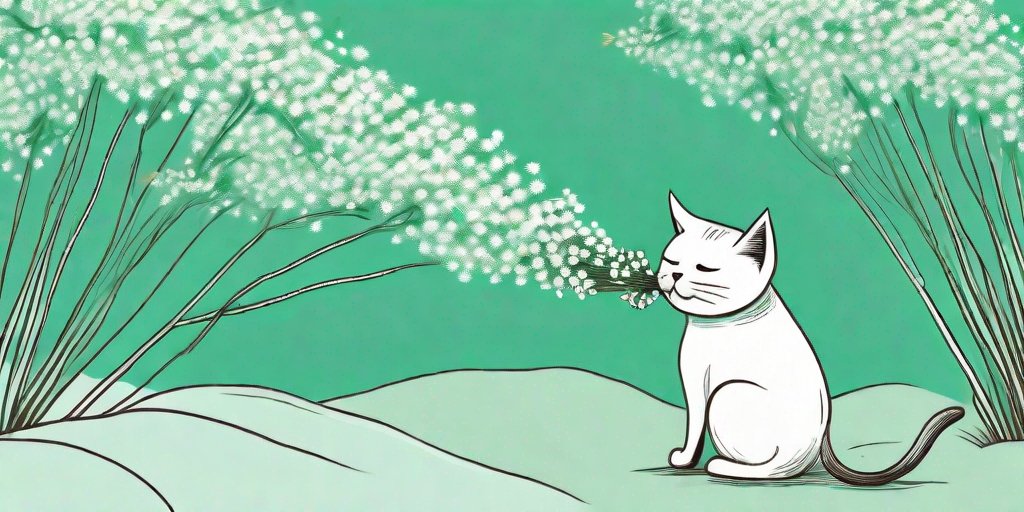
Greetings, dear cat parents! You might be here because you've noticed your feline friend showing an unusual interest in your beautiful bouquet of baby's breath. Or perhaps you're just a curious cat lover who's always on the lookout for potential hazards for your furry friend. Either way, you've come to the right place. Let's delve into the intriguing world of cats and baby's breath.
The Curiosity of Cats and Baby's Breath
Ever noticed how cats have a knack for getting into everything? They're like furry little detectives, always on the prowl for the next big mystery. And sometimes, that mystery happens to be your floral arrangements. But why baby's breath, you ask? Well, let's find out.
Firstly, baby's breath, also known as Gypsophila, is a popular filler in bouquets and floral arrangements. Its delicate, tiny white flowers and misty appearance make it a favorite among florists. But to your cat, it might just be another exciting thing to poke at, sniff, or even nibble on.
Secondly, cats are naturally attracted to things that move easily. The light, airy nature of baby's breath can flutter with the slightest breeze, making it an irresistible target for your cat's playful paws.
Is Baby's Breath Toxic to Cats?
Now, this is where things get serious. Yes, dear cat parents, baby's breath is indeed toxic to cats. According to the ASPCA, baby's breath contains gyposenin, a saponin that can cause vomiting, diarrhea, and other digestive issues in cats. So, while it might look innocent and pretty, it's a no-no for our feline friends.
But don't panic just yet. While baby's breath is toxic, it's not usually life-threatening. However, if your cat consumes a large amount, or if they're particularly sensitive, it could lead to more serious complications. So, it's best to keep those bouquets out of paw's reach.
What to Do If Your Cat Eats Baby's Breath
So, you've caught your cat in the act, chomping down on your beautiful bouquet. What do you do? First of all, don't panic. Your cat is probably more scared of your reaction than the actual baby's breath.
Next, remove any remaining baby's breath from your cat's mouth and move the bouquet to a safer location. Then, monitor your cat closely for any signs of distress, such as vomiting, diarrhea, or loss of appetite.
If your cat shows any of these symptoms, contact your vet immediately. They may recommend bringing your cat in for an examination, or they may provide instructions for home care. Either way, it's important to act quickly to ensure your cat's safety.
Preventing Future Incidents
Now that you know the dangers of baby's breath, you're probably wondering how to keep your cat safe in the future. The simplest solution is to avoid bringing baby's breath into your home. But if you can't resist its delicate charm, there are a few precautions you can take.
Firstly, keep your bouquets in a room that your cat can't access. If that's not possible, consider placing them in a tall, sturdy vase that your cat can't knock over. You could also try spraying the flowers with a cat deterrent spray, although this may not be effective for all cats.
Finally, consider investing in cat-friendly plants. There are plenty of beautiful, non-toxic plants out there that your cat can safely sniff, chew, and bat around to their heart's content.
FAQs
Are all parts of the baby's breath plant toxic to cats?
Yes, all parts of the baby's breath plant are toxic to cats. This includes the flowers, leaves, and stems.
What other plants are toxic to cats?
There are many plants that are toxic to cats, including lilies, azaleas, and tulips. Always research a plant before bringing it into your home.
What are some cat-friendly plants?
Some cat-friendly plants include spider plants, Boston ferns, and catnip. These plants are non-toxic and safe for your cat to interact with.
Conclusion
So, there you have it, folks. The truth about baby's breath and your feline friend's health. While it might be a bummer to cross one more plant off your list, remember that your cat's safety is worth it. After all, they're not just pets, they're family.
So, next time you're at the florist, think twice before adding that bunch of baby's breath to your bouquet. Your cat will thank you for it. And who knows? You might just find a new favorite among the cat-friendly plants.
Stay curious, stay informed, and most importantly, stay cheeky, dear cat parents. Until next time!















